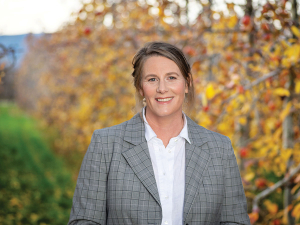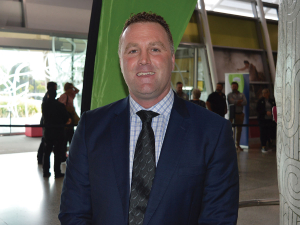Horticulture New Zealand has welcomed the Hawke’s Bay Regional Council’s decision to advance plans for a new water storage facility on the Heretaunga Plains.
The council is now entering a full feasibility phase for a medium-sized 27-million-cubic-metre water storage facility at Whanawhana, aimed at supporting the region’s people, businesses and environment.
The Heretaunga Plains, home to most of the region’s population, includes Napier and Hastings. Formed over 250,000 years ago from alluvial and coastal deposits, alternating levels of coarse and fine sediments allow for the formation of aquifers which provides 64% of the Heretaunga Plains water needs, with a further 35% provided directly by streams and rivers.
Council chair Hinewai Ormsby said the future of Hawke’s Bay’s economy depended upon water security and the ability to access new freshwater supplies. However, this was becoming a challenge as the climate changes, representing increasing risk to the people of Hawke’s Bay and its environment and economy.
“As part of our ongoing Water Security Programme, HBRC is focused on how we can better protect our waterways while supporting the future of our economy. There is now greater appreciation of the importance of resilience and the role of infrastructure in responding to climate change.
“Well-developed, responsible water storage projects will need to be part of our future, alongside continued discipline in demand efficiency and other potential supply initiatives.”
HortNZ general manager for strategy and policy Michelle Sands says the announcement is welcome news for growers and households alike, as access to reliable irrigation water is also essential for a thriving horticultural sector.
She explains that the Heretaunga Plains is one of New Zealand’s most important food-producing regions as its soils and climate enable a high degree of crop diversity.
“A secure and sustainable water supply is crucial to maintaining this productivity. HortNZ acknowledges that the underlying aquifer, which supplies much of the water for horticulture, must be carefully managed to protect the health of spring-fed rivers and streams.
“The council’s recognition of the need for a secure freshwater supply for growers is a significant step forward. The new water storage facility will help safeguard the industry’s future, create resilience to climate change and support continued economic growth and job creation in the region.”
The proposed facility would be located on a small tributary off the Ngaruroro River. Excess water would be harvested when abundant and could be used to replenish rivers and aquifers during dry spells or times of high demand.
This would allow residents - including growers - to access water when they need it, while improving the overall health of rivers and streams and enabling strong, sustainable growth in the region.
Ormsby said the facility would be part of a multi-faceted approach to maximising efficiency and water consumption while also unlocking significant productivity gains.
She adds that the new governance entity will bring together iwi and mana whenua partners, irrigators, representatives of commercial and municipal water users and community stakeholders to lead the project with a strong development focus.
Horticultural crops grown on the Heretaunga Plains are critical to both export and domestic markets. The plains are particularly vital to New Zealand’s apple industry, valued at over $1 billion in revenue, with around 65% of production based in Hawke’s Bay.



















